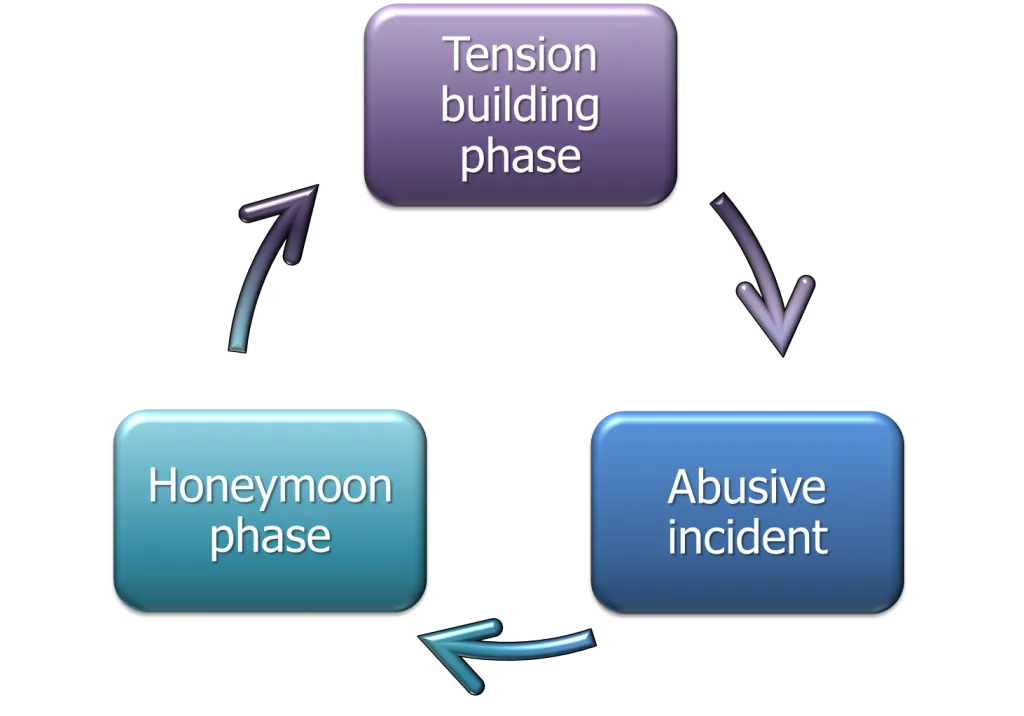What is the Honeymoon Phase in Domestic Violence (DV)
The honeymoon phase in domestic violence (DV) is a deceptive and often manipulative period that follows an incident of abuse. It’s a crucial part of the cycle of abuse, characterized by a sudden shift in the abuser’s behavior. After an act of violence or aggression, the abuser may become incredibly apologetic, loving, and attentive. This phase is designed to make the victim believe that the abuse was an isolated event and that the abuser is genuinely remorseful and committed to change. Understanding the honeymoon phase is vital for recognizing the cyclical nature of domestic violence and the tactics employed by abusers to maintain control. It’s a complex phenomenon that often traps victims in abusive relationships because it gives them false hope and reinforces the belief that the abuser can change.
The Cycle of Abuse Explained
The cycle of abuse, which includes the honeymoon phase, is a pattern of behavior that repeats itself in abusive relationships. This cycle typically consists of several distinct phases that can vary in length and intensity. Recognizing the cycle is key to understanding domestic violence and breaking free. The cycle typically starts with the tension-building phase, where small arguments and frustrations escalate. Next is the incident phase, where the abuse occurs, whether it is physical, emotional, or psychological. Following the incident is the honeymoon phase, where the abuser attempts to regain the victim’s trust. Finally, the cycle begins again with the tension-building phase, perpetuating the abuse.
Tension Building Phase
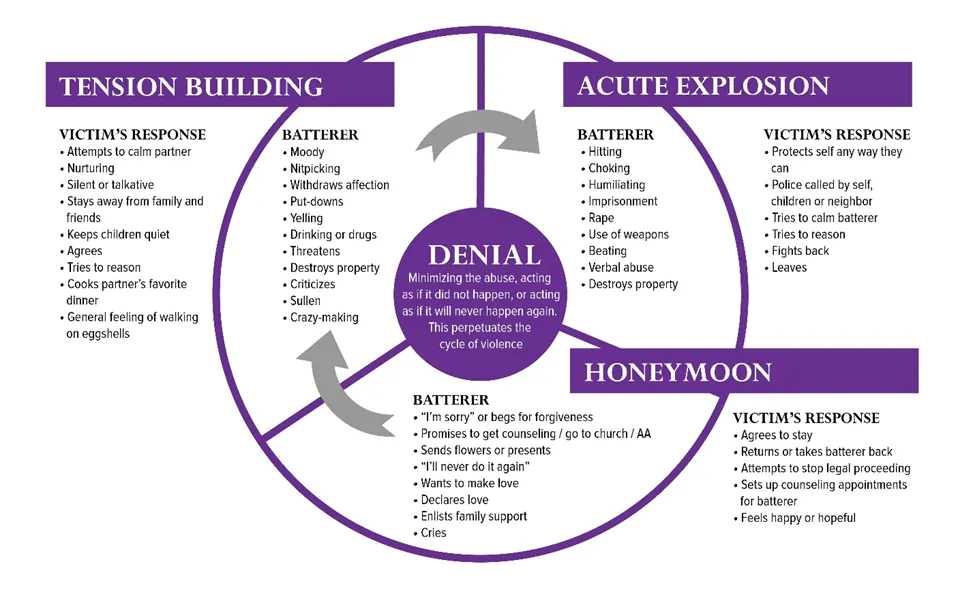
The tension-building phase is the initial stage in the cycle of abuse. During this phase, minor incidents and arguments start to arise. The abuser may become increasingly irritable, critical, and controlling. Communication becomes strained, and the victim may find themselves walking on eggshells to avoid conflict. This phase is marked by a gradual escalation of tension, which can include verbal abuse, intimidation, and threats. As the tension builds, the victim often feels trapped and anxious, fearing what is to come. This phase can last for days, weeks, or even months, creating an environment of chronic stress and fear.
The Incident Phase
The incident phase is the actual occurrence of the abuse. This can manifest as physical violence, such as hitting, slapping, or pushing, but it can also include emotional abuse like insults, threats, and humiliation. The severity of the incident can vary, but it always involves a loss of control by the abuser and a violation of the victim’s boundaries. The incident phase is often unpredictable and can happen suddenly, leaving the victim feeling shocked, confused, and traumatized. This phase reinforces the abuser’s power and control over the victim, instilling fear and increasing the victim’s dependence on the abuser. The incident phase is what the honeymoon phase attempts to counteract.
The Honeymoon Phase
Following the incident, the honeymoon phase emerges, marked by the abuser’s attempts to regain the victim’s trust and affection. This phase is characterized by apologies, promises, and displays of love and affection. The abuser may shower the victim with gifts, compliments, and romantic gestures. They might express deep remorse for their actions, blame external factors, or even deny the abuse altogether. This phase is a calculated effort to minimize the impact of the abuse and convince the victim that the abuser is truly sorry and will never repeat the behavior. The honeymoon phase is the most dangerous aspect of the cycle.
Why the Honeymoon Phase Occurs
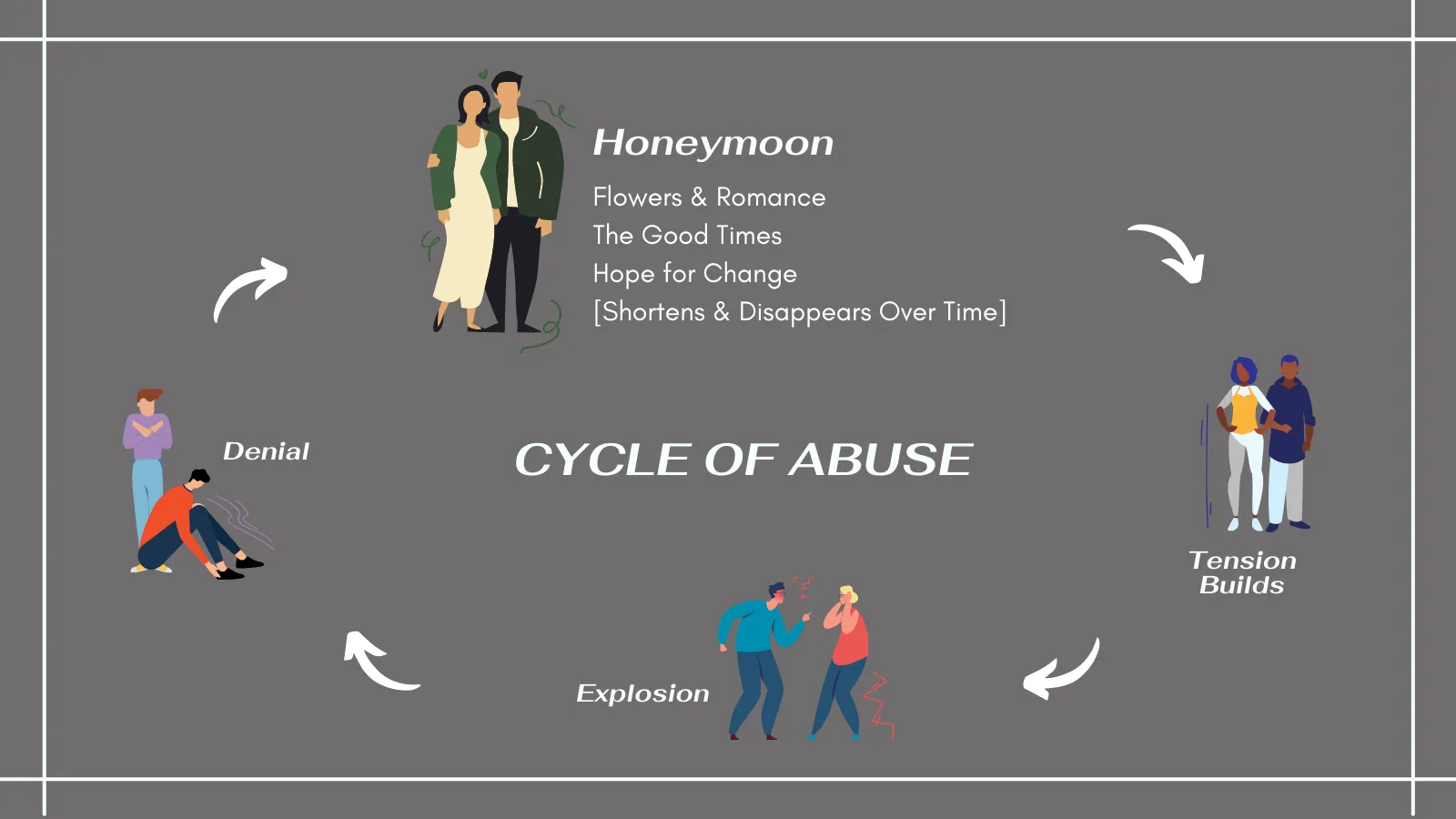
The honeymoon phase in domestic violence occurs for several complex reasons, all centered around the abuser’s need for control and manipulation. One of the primary motivations is to maintain the relationship and keep the victim from leaving. The abuser might genuinely fear losing the victim and sees the honeymoon phase as a way to repair the damage and reinforce the bond. Additionally, the abuser may have a distorted view of the relationship, genuinely believing that they are not responsible for the abuse and that the victim is the problem. The abuser wants to return to the ’normal’ state of the relationship, where they are in control. The cycle is often repeated because it works and keeps the victim trapped.
Manipulative Tactics Used in the Honeymoon Phase
During the honeymoon phase, abusers employ a range of manipulative tactics to maintain control and regain the victim’s trust. These tactics are often subtle and can be difficult to recognize. Common manipulative tactics include excessive apologies, insincere promises to change, and attempts to downplay the severity of the abuse. Abusers might shower the victim with gifts, affection, and attention. They might also engage in gaslighting, making the victim question their own sanity and perception of reality. Another tactic is to isolate the victim from friends and family, making them more dependent on the abuser. These tactics create an environment of confusion, guilt, and dependence that makes it challenging for the victim to leave the relationship.
How Abusers Use the Honeymoon Phase to Their Advantage
Abusers strategically use the honeymoon phase to their advantage by exploiting the victim’s emotions and vulnerabilities. The apologies and promises of change create a false sense of hope and convince the victim that the abuser is truly remorseful and capable of change. This manipulation allows the abuser to regain control over the victim. The abuser understands that the victim likely wants the relationship to work and will be susceptible to the love-bombing tactics of the honeymoon phase. By creating a loving and attentive atmosphere, the abuser reinforces the victim’s belief in the good aspects of the relationship, making it harder to leave. The abuser uses this phase to normalize the abuse and to create a cycle of hope and disappointment.
Recognizing the Warning Signs
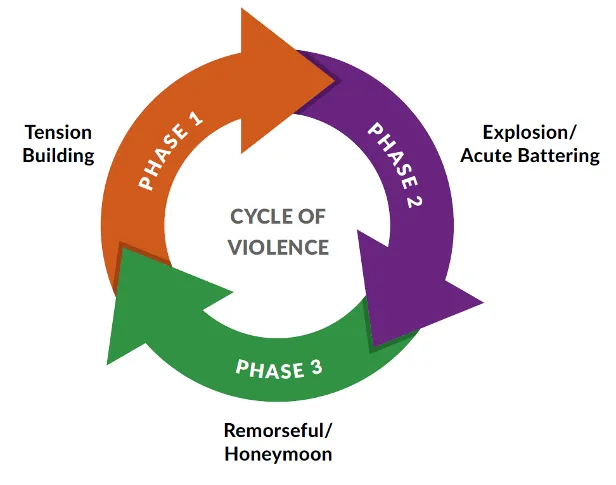
Recognizing the warning signs of the honeymoon phase is crucial for victims of domestic violence. It allows them to understand the cyclical nature of the abuse and protect themselves from further harm. The honeymoon phase is often characterized by sudden and dramatic shifts in the abuser’s behavior. It is crucial to be aware of these signs and to approach the situation with caution. Being able to recognize these signs can empower victims to seek help and escape the cycle of abuse.
Early Warning Signs of the Honeymoon Phase
Early warning signs of the honeymoon phase can be subtle but are essential to recognize. These may include an overabundance of apologies and promises that are not backed up by actions. The abuser might shower the victim with affection, gifts, and attention, creating a sense of being love-bombed. They may also become excessively attentive, monitoring the victim’s every move or trying to isolate them from friends and family. Early warning signs can be easily dismissed, but recognizing them is crucial for understanding the cyclical pattern of abuse and protecting oneself.
Changes in Behavior During the Honeymoon Phase
Changes in the abuser’s behavior during the honeymoon phase are often dramatic and can be confusing for the victim. These shifts include a sudden shift from anger or aggression to excessive displays of affection. The abuser may become overly attentive, showering the victim with compliments, gifts, and romantic gestures. They might express deep remorse for their actions and promise never to repeat the behavior. However, the promises are rarely kept. These changes in behavior are designed to manipulate the victim and create a false sense of security. These actions aim to make the victim believe that the abuse was an isolated event.
Red Flags to Watch Out For
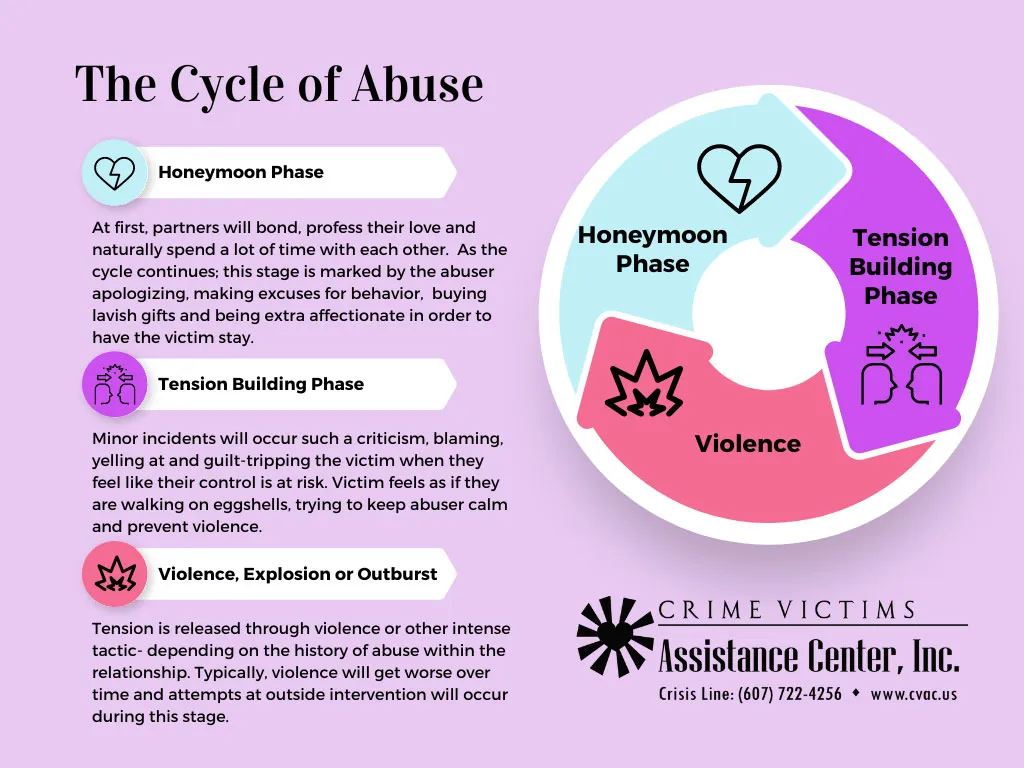
Several red flags should raise concerns during the honeymoon phase. Beware of insincere apologies and promises that are not followed by genuine changes in behavior. Be wary of excessive gifts, compliments, and displays of affection, as these can be manipulative tactics used to regain control. It is a red flag when the abuser blames others for their actions. It is essential to trust your instincts and recognize that the honeymoon phase is often a temporary attempt to conceal the underlying patterns of abuse. If the cycle repeats, it is a clear indicator that the abuse will continue. It is crucial to prioritize your safety and well-being.
Why It’s Difficult to Leave During the Honeymoon Phase
Leaving an abusive relationship during the honeymoon phase is incredibly difficult due to the emotional manipulation and false promises that characterize this period. The abuser’s apologies, displays of affection, and promises of change create a sense of hope and make it hard for the victim to believe that the abuse will happen again. The victim may want to trust the abuser, wanting the relationship to return to the loving dynamic they had before the incident. This can lead to cognitive dissonance, where the victim struggles to reconcile the abuser’s abusive actions with their loving behavior. The victim is often isolated and may be financially dependent on the abuser.
Psychological Manipulation and the Honeymoon Phase
Psychological manipulation is a key aspect of the honeymoon phase, designed to erode the victim’s sense of self and make them dependent on the abuser. The abuser uses tactics like gaslighting, where they deny or distort the victim’s reality, and love-bombing, where they shower the victim with excessive affection and attention. This can lead to the victim questioning their sanity and judgment. They are often made to feel guilty or responsible for the abuse. This manipulation can be subtle and insidious, making it challenging for the victim to recognize the abuse and find the strength to leave.
The Impact on Victims
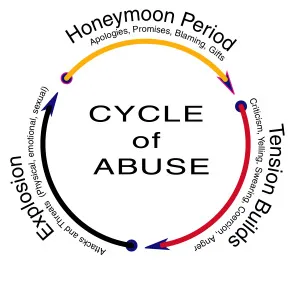
The impact of the honeymoon phase on victims of domestic violence can be devastating, leading to a range of emotional and psychological issues. The constant cycle of abuse, followed by apologies and promises, can cause severe trauma and erode the victim’s sense of self-worth. The victim may struggle with feelings of confusion, guilt, and shame, making it challenging to trust their instincts or make rational decisions. The cyclical nature of the abuse can also lead to a sense of hopelessness and entrapment, making it difficult for victims to see a way out. The emotional and psychological effects of the honeymoon phase can have long-lasting effects, including depression, anxiety, and post-traumatic stress disorder (PTSD).
Emotional and Psychological Effects
The emotional and psychological effects of the honeymoon phase can be profound and long-lasting. Victims often experience a rollercoaster of emotions, swinging between hope and despair, love and fear. They may struggle with feelings of low self-esteem, anxiety, and depression. The constant uncertainty and emotional manipulation can lead to symptoms of PTSD, such as flashbacks, nightmares, and hypervigilance. The cycle of abuse can also result in a loss of trust in themselves and others. Victims may isolate themselves, feeling ashamed or afraid to reach out for help. The long-term effects can include difficulty forming healthy relationships and challenges with overall mental health.
The Cycle’s Influence on Victim’s Self-Esteem
The cycle of abuse, especially the honeymoon phase, significantly erodes the victim’s self-esteem. The abuser’s manipulative tactics and the constant emotional rollercoaster can make the victim feel worthless, unlovable, and responsible for the abuse. The victim may internalize the abuser’s criticisms and begin to believe they are flawed or deserving of the mistreatment. This negative self-perception can lead to feelings of isolation and hopelessness. It can make it incredibly difficult for the victim to leave the abusive relationship, as they may believe they are better off with the abuser than alone.
Breaking the Cycle and Seeking Help
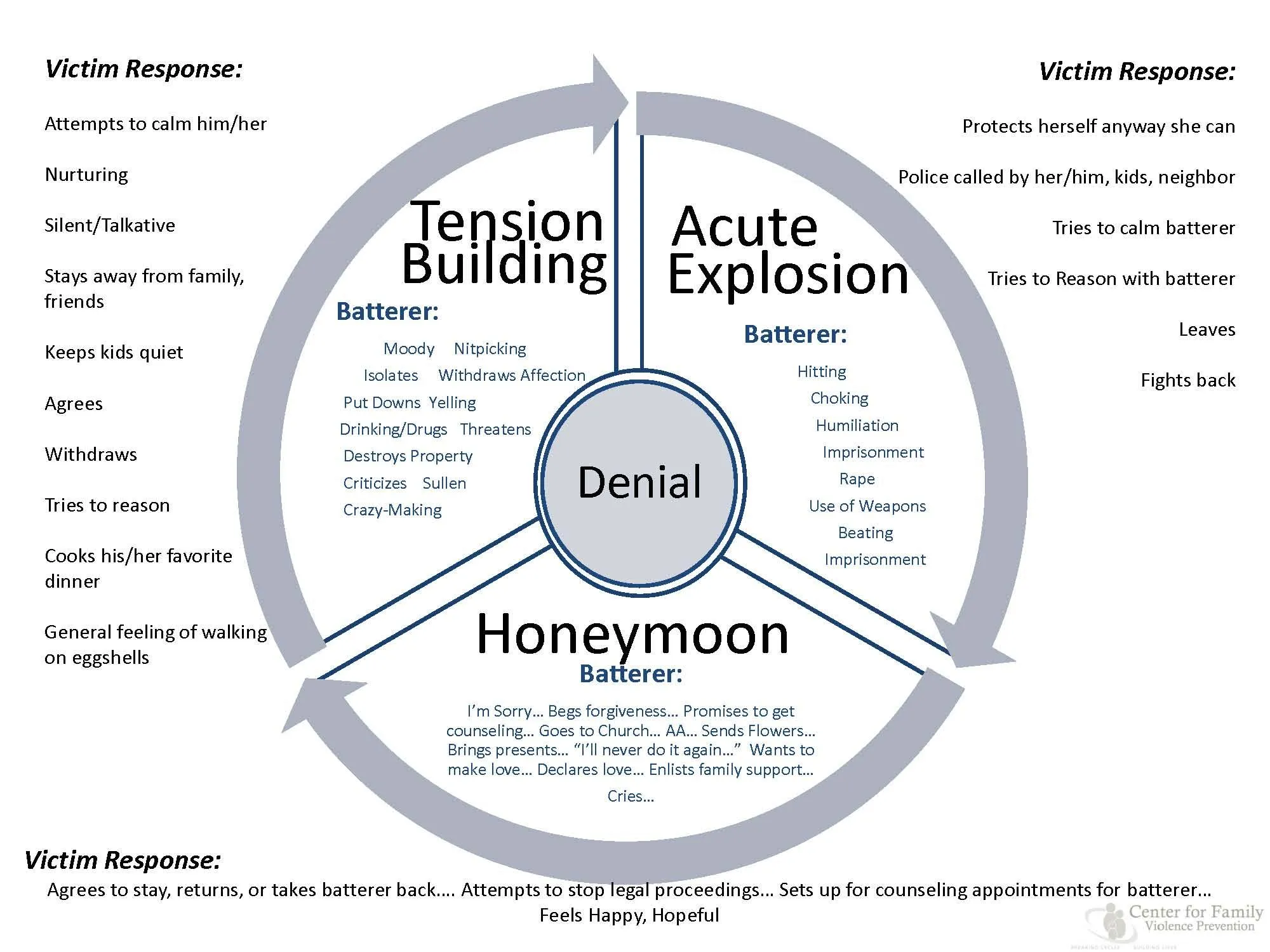
Breaking the cycle of abuse requires recognizing the patterns, seeking support, and taking steps to escape the abusive relationship. It’s essential for victims to understand that the abuse is not their fault and that they deserve to be treated with respect and dignity. The first step is often acknowledging the abuse and recognizing the cycle. This can be difficult, but it is critical for taking the next steps toward safety and healing. Victims should know they are not alone and that help is available, with resources and support systems designed to assist in escaping and recovering from domestic violence.
Steps to Take to Escape the Abuse
Escaping an abusive relationship is a complex and often dangerous process. Safety planning is the most critical step. This involves identifying safe places to go, creating a support network, and having an escape plan in place. Collecting important documents, such as identification, financial records, and medical information, is crucial. It’s essential to contact domestic violence hotlines or shelters for support and guidance. Reaching out to trusted friends and family members is also important. The goal is to establish a safety net and prepare for the moment to leave. Be aware that leaving is the most dangerous time for the victim.
Finding Support and Resources
Finding support and resources is essential for victims of domestic violence. Domestic violence hotlines offer confidential support, guidance, and referrals to shelters and other resources. Local shelters provide safe housing and support services. Support groups offer a place to connect with other survivors and share experiences. Therapists and counselors specializing in domestic violence can provide emotional support and help victims process their trauma. Legal aid services can help victims navigate the legal system and obtain restraining orders. Reaching out for help is a sign of strength and a crucial step toward safety and healing.
Seeking Professional Help
Seeking professional help is critical for victims of domestic violence. Therapists and counselors specializing in trauma and domestic violence can provide the support needed to process the abuse. Therapy can help victims develop coping mechanisms, build self-esteem, and heal from the emotional and psychological wounds of the abuse. Cognitive Behavioral Therapy (CBT) and Trauma-Focused Therapy (TFT) are often effective in treating the effects of domestic violence. It is essential to choose a therapist experienced in dealing with domestic violence. Therapy can play a key role in breaking the cycle and achieving long-term healing and recovery.
